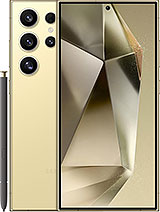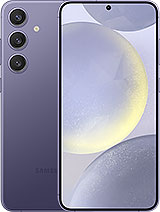Asus Zenfone 11 Ultra review

Clean Android 14 with some Asus goodies
The Zenfone 11 Ultra runs on Android 14. Like the Zenfone 10, the Zenfone 11 Ultra will receive at least two major software updates and at least four years of security patches.

Asus has a very light software layer of its own running on top of what is basically AOSP. Asus has its preferred way of handling certain things, like system volume controls and the quick settings UI, but there is always the option to revert to the AOSP way of handling things available. That goes for most custom bits scattered all over the place. As we said, though, for the most part, you are getting a very clean and AOSP-like experience.
Without going into too much detail, we will point out some of the custom software work that Asus has put into its ROM. A Mobile Manager app acts as a central hub for managing the phones' performance and things like RAM and storage.

Twin Apps is a very nifty addition. Its name is quite self-explanatory. You do get a finite list of apps that support the feature, most of which seem to be games, but most major messengers are also on the support list. The edge tool is also self-explanatory. The interface is highly customizable. It spawns apps in floating windows when available and can adapt to whatever is going on with the phone with specific options like Video Genie, which supports background playback for videos, among other things.
OptiFlex has been a mainstay for Asus devices for a while now. It is a system-level app accelerator that reduces launch times, and UI reloads when recalling apps. It can also save on standby power. The idea is to have it enabled for your most used apps.

Finally, even though the Zenfone doesn't have the full set of gaming features and goodies of the ROG Phone line like the Armory Crate, the in-game Game Genie overlay is present. It includes all sorts of nifty quick toggles, shortcuts to various features, readouts for temperature, CPU and GPU load, and in-game FPS.
Probably best of all, though, you get to enjoy the incredibly powerful and in-depth Asus systems for capturing and executing macros and doing control mapping. That includes on-screen controls, joysticks, and even a mouse and keyboard connected to the phone.
In case you were wondering, yes, you can gain an unfair advantage over your opponents quite easily and use a keyboard and mouse for things like most shooter games.
We should mention that Asus doesn't solely rely on AOSP apps for its core functionality. On the contrary, Asus has its own in-house apps like Gallery, Clock and File Manager. Even so, there is absolutely no bloat to speak of. No ads either, in case you were wondering.
Finally, no 2024 smartphone announcement would be complete without some AI features. Asus already had AI Noise Cancellation in calls and Semantic Search in the gallery, as well as the setting menu of the ROG Phone 8, which you can find on this phone as well.
Furthermore, Asus promises to deliver the following new AI features to users of the Zenfone 11 Ultra with a future software update: AI Transcript, AI Call Translator, AI Wallpaper.
AI Transcript works in the sound recorder app and automatically transcribes audio, which you can then summarize automatically as well. The transcription part works on device, and the summary part requires cloud computing.
AI Call Translator does what you would imagine, works both ways and currently supports live translation for Chinese, English, French, German, Spanish, Portuguese, Italian and Japanese. Translation works on device.
AI wallpaper works entirely on-device as well and is basically image-generative AI with a nifty guided experience.

We will mention that what we experienced from the early preview we got was pretty impressive and quite competitive with Samsung's new counterpart, S24 Galaxy AI features. It is also important to note that pretty much all of the AI features are designed to work on-device and should remain free in the future unlike Samsung's.
Benchmarks and performance
The Zenfone 11 Ultra, as its name suggests, is a true flagship in terms of specs. It is based on the Snapdragon 8 Gen 3 chipset. One prime Cortex-X4 core is clocked at up to 3.3 GHz, accompanied by three Cortex-A720 cores working at 3.15 GHz and another two Cortex-A72 ones at 2.96 GHz. Finally, there are two Cortex-A520 cores clocked at up to 2.26 GHz. The GPU is an Adreno 750.

The Snapdragon 8 Gen 3 is accompanied by either 12GB or 16GB of LPDDR5X RAM. Also, 256GB or 512GB of UFS 4.0 storage, respectively. Our review unit is the top tier 16GB/512GB model.
Let's dig into some benchmarks, starting with CPU tests and GeekBench. Unsurprisingly, the Snapdragon 8 Gen 3 inside the Zenfone 11 Ultra packs quite the punch and has excellent burst performance.
It is worth noting that the Zenfone 11 Ultra has a dedicated performance mode that pushes the hardware a bit harder than the regular Dynamic mode. We ran our tests in both modes just to be thorough.
The Snapdragon 8 Gen 3 offers the pinnacle of Android performance, trading blows with the likes of the MediaTek Dimensity 9300. The Apple A17 Pro chip remains in a league of its own when it comes to CPU performance.
AnTuTu is very kind towards the Zenfone 11 Ultra. You basically get the best the Android realm currently has to offer. Even without toggling performance mode, the Zenfone 11 Ultra posts very respectable scores, matching the Snapdragon 8 Gen 2 at its best.
The Adreno 750 GPU inside the Snapdragon 8 Gen 3 is currently the best. It tends to do better than the Immortalis-G720 MC12 inside the Dimensity 9300 and is notably better in most raster rendering scenarios than the Xclipse 940 inside Samsung's Exynos 2400 flagship.
Performance-wise, the Zenfone 11 Ultra is excellent and meets the expectations set forth by the Snapdragon 8 Gen 3 inside it. It basically tops the charts when it comes to burst loads and synthetic benchmarks. In more practical terms, the Zenfone 11 Ultra runs incredibly smoothly with no slowdowns or hiccups. It chews through each and every task we throw its way, as it should.
Thermal-throttling
The Zenfone 11 Ultra has ample burst performance, but sustained performance is a different affair. With a chip as powerful as the Snapdragon 8 Gen 3 and no active cooling, you are bound to lose some performance to thermal throttling. In the case of the Dynamic mode, that's almost 50% of the performance.
There is also the Performance mode. You probably don't want to use the Zenfone 11 Ultra in performance mode for prolonged loads. The profile is tuned to go very hard out of the gate and sustain performance for as long as it can, producing a lot of heat in the process. The phone gets really hot, almost worryingly so in this scenario. Too hot to touch and handle.
In comparison, in the Dynamic mode, the phone remains perfectly comfortable to hold.
Reader comments
- Anonymous
- 28 Oct 2024
- 61v
entry level 💀
- Wile T. Irbis
- 18 Oct 2024
- Jx2
Obviously it's a ROG Phone 8 refresh, but with the sober ZenFone finish. Components are probably those that narrowly failed the binning and didn't cut it for turning them into a ROG Phone, but... It's a win-win for ASUS and their custo...
- Pradip Madgaonkar
- 18 Sep 2024
- tE}
Value For Money:there are probably better options out there if you're looking for value, but this is a good compact phone if you're looking for one. even the s21 (6.1" screen) feels too big when compared to this phone.colour is nice, s...






















